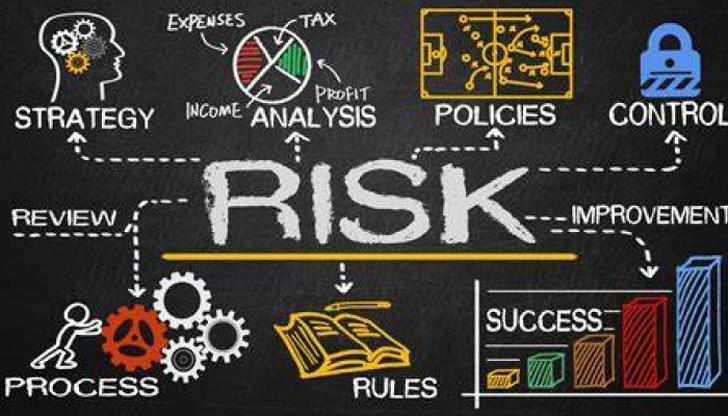The Impact of Financial Innovation on Risk Management

Financial innovation refers to the development and application of new financial instruments, technologies, markets, or processes that improve or transform financial services and practices. Over the past few decades, financial innovation has fundamentally reshaped the landscape of global finance, bringing both significant benefits and new risks. One of the most important areas affected by financial innovation is risk management. While financial innovations have enabled firms to better manage risks and optimize their portfolios, they have also introduced new types of risks and challenges that require adaptation in risk management strategies. This article explores the impact of financial innovation on risk management, examining how new financial products, technologies, and market structures have transformed the way firms manage and mitigate risks. The article also discusses the benefits and challenges that financial innovation presents to risk management in both financial institutions and broader financial markets.
Financial Innovation: A Brief Overview
Financial innovation can take many forms, from the creation of new financial products such as derivatives, structured securities, and exchange-traded funds (ETFs) to the development of financial technologies (fintech), blockchain, and big data analytics. Some of the most prominent examples of financial innovation include: •Derivatives and Structured Products: Derivatives such as options, futures, and swaps, as well as complex structured products, have been used to hedge, speculate, or arbitrage risks in the financial markets. •Securitization: The process of bundling loans or other assets into securities that can be traded on the secondary market, such as mortgage-backed securities (MBS). •Fintech: The rise of digital financial services, including online banking, peer-to-peer lending, mobile payments, and the use of blockchain and cryptocurrency. •Machine Learning and Big Data: The application of artificial intelligence (AI) and machine learning in financial services to improve risk prediction, fraud detection, and portfolio optimization.
The Role of Financial Innovation in Risk Management
Risk management refers to the process of identifying, assessing, and mitigating the various risks that an organization may face. Traditionally, financial institutions and businesses managed risk through techniques such as diversification, asset allocation, and insurance. However, financial innovation has significantly transformed the tools and approaches used for risk management.

1.Enhanced Risk Hedging with Derivatives One of the most significant innovations in risk management has been the development of derivatives. Financial derivatives are contracts whose value is derived from the price of an underlying asset, such as stocks, bonds, currencies, or commodities. These instruments provide businesses and financial institutions with tools to hedge against a wide range of risks, including interest rate risk, currency risk, and commodity price fluctuations. For example, firms can use: •Forward Contracts and Futures to lock in prices for commodities or currencies, thus protecting themselves from adverse price movements. •Options to hedge against potential losses by purchasing the right, but not the obligation, to buy or sell an asset at a specific price in the future. •Swaps to exchange cash flows, such as interest rate swaps, which can help businesses manage fluctuations in interest rates. These derivatives allow firms to mitigate risk exposure in a more precise and efficient manner than traditional risk management techniques. However, the increased use of derivatives also introduces new risks, such as counterparty risk (the risk that the other party will default on its obligations) and liquidity risk (the risk that derivatives cannot be unwound in a timely manner). 2.Securitization: Spreading Risk Across the Market Securitization has been another significant financial innovation that has reshaped risk management. By pooling together a large number of similar financial assets—such as mortgages, loans, or receivables—into a security, financial institutions can transfer the risks associated with these assets to other investors. Through securitization: •Banks can reduce their exposure to credit risk by selling off assets to investors, thereby freeing up capital for new loans. •Risk is distributed across a broad range of investors, which can help mitigate the financial impact on any single entity. While securitization can help spread risk, it also introduces new complexities. For example, the global financial crisis of 2008 demonstrated how securitized assets, such as subprime mortgage-backed securities, can create systemic risk. The inability of investors and institutions to assess the underlying risks of these products led to massive losses and a collapse in market confidence. 3.Fintech and Risk Management Automation The rise of fintech has brought about significant improvements in the automation of risk management. Technologies such as machine learning, big data analytics, and blockchain are transforming how financial institutions identify, measure, and manage risk. •Machine Learning and Big Data: Financial institutions are increasingly using machine learning algorithms to analyze vast amounts of data and identify patterns that might indicate emerging risks, such as credit defaults or fraud. Big data enables more accurate risk assessments by providing a more detailed picture of consumer behavior, market conditions, and other factors that influence financial performance. •Blockchain and Smart Contracts: Blockchain technology allows for secure, transparent, and decentralized record-keeping. Smart contracts, which are self-executing contracts with the terms of the agreement directly written into code, offer the potential to automate many aspects of risk management, such as verifying transactions and reducing counterparty risk. While these technological innovations can significantly improve the efficiency of risk management practices, they also introduce new challenges. For instance, cybersecurity risks have become a major concern with the increased reliance on digital platforms, as hackers may target financial institutions' databases and systems. Additionally, the complexity of machine learning models may make it difficult for institutions to fully understand and explain their risk models, potentially leading to issues with transparency and accountability.

4.Risk Management in the Global Market Financial innovation has made it easier for firms to access capital markets globally and engage in cross-border transactions. However, this increased interconnectedness has introduced new risks related to exchange rate fluctuations, geopolitical events, and regulatory differences. For instance, the development of global financial markets and the ease of cross-border transactions have led to increased exposure to foreign exchange risk. Financial institutions can use derivatives like currency swaps and options to manage these risks, but they must also consider other factors such as political instability, trade wars, and regulatory changes. Moreover, the global nature of financial markets has made it essential for firms to adopt a more comprehensive risk management framework that takes into account not only local risks but also global systemic risks. This has led to greater emphasis on portfolio diversification, scenario analysis, and stress testing to ensure that institutions can withstand global market shocks.
Challenges and Risks Associated with Financial Innovation

While financial innovation has undoubtedly improved the ability of firms to manage risks, it has also introduced new challenges and risks. Some of the most significant challenges include: 1.Increased Complexity The complexity of financial products and risk models has increased significantly due to innovation. The introduction of new financial instruments, such as collateralized debt obligations (CDOs) or credit default swaps (CDS), has made it harder for both investors and regulators to understand the risks involved. This complexity can lead to poor risk assessment and decision-making, especially when risk models fail to account for extreme events or market shocks. 2.Systemic Risk Financial innovation has also contributed to the rise of systemic risk, where the failure of a single financial institution or market participant can have widespread repercussions for the entire financial system. The 2008 global financial crisis was partly caused by the interconnectedness of financial institutions and the widespread use of complex financial products whose risks were not fully understood. This highlighted the need for better regulatory oversight and the establishment of systems to monitor and mitigate systemic risk. 3.Regulatory Challenges Financial innovation often outpaces regulatory frameworks, creating gaps in oversight. Regulators struggle to keep up with the rapid pace of innovation, particularly in emerging areas such as fintech, cryptocurrencies, and blockchain. As a result, some innovative financial products and services may operate in a regulatory gray area, making it difficult to ensure proper risk management and investor protection.
Conclusion
Financial innovation has had a profound impact on risk management practices, offering new tools and techniques for managing and mitigating risks. Derivatives, securitization, fintech, and advanced data analytics have all enhanced the ability of firms to hedge, diversify, and automate risk management processes. However, these innovations also present new challenges, including increased complexity, systemic risk, and regulatory concerns. As financial markets continue to evolve, it will be crucial for firms and regulators to adapt their risk management strategies to address the risks introduced by innovation. By striking a balance between the benefits of financial innovation and the need for sound risk management, financial institutions can better navigate an increasingly complex and interconnected global market. Ultimately, the key to effective risk management in the age of financial innovation lies in a deep understanding of both the opportunities and the risks that these innovations present.
